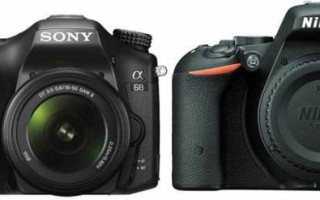Sony A68 vs Nikon D5500
Sony A68 vs Nikon D5500
Sony recently announced the release of the A68 camera. This device can be compared to Nikon's D5500. To understand who will win in this performance race, let's look at the comparison table.
Features/Models
Sony A68
Nikon D5500
Permission
Sensor size/type
APS-C (23.5 x15.6 mm)
APS-C (23.5 x 15.6 m)
Low pass filter
GPU
Number of AF points
79 including 15 crossover
39 points 9 cross type
Image stabilization
Autofocus system
Contrast detection + phase detection
Contrast detection + phase detection
ISO
Shutter Speed Min/Max
Maximum continuous shooting speed
8 frames per second
5 frames per second
Video resolution
1920 x 1080 (60p, 30p)
1920 x 1080 60fps, 50fps, 30fps
Display
2.7 inches. LCD screen. Sensory
3.2 inches. Touch screen. Turning. Resolution 1,037,000 dots
Viewfinder
Electronic viewfinder 100%
Optical, pentaprism (95%)
Hot shoe
Battery life (CIPA)
Protection from moisture and dust
dimensions
143 x 104 x 81 mm
143 x 104 x 81 mm
Weight
Image sensors
The sensors of both cameras are made by Sony, but they are made using different technologies. The Sony camera uses fixed translucent mirror technology (SLT). Nikon D5500 is a standard DSLR camera with a moving mirror. Sony's translucent mirror technology in the A68 absorbs 10% of the light that would otherwise reach the sensor.
The resolution of the Sony A68 and Nikon D5500 sensors is almost the same. It is 24MP and 24.2MP. The Sony A68 camera uses an image sensor paired with a modern, powerful Bionz X graphics processor. This combination creates high-resolution images with stunning color reproduction. The Nikon D5500's EXPEED 4 processor is also very capable with an APS-C sensor.
The Sony A68's low-light noise reduction will perform better than the Nikon D5500's.
Autofocus system
Sony A68 received 79 autofocus points, 15 of which are cross-type. The system is very fast and accurate. Nikon D5500 has 39 AF points, including 9 cross-type points. This is significantly less than Sony, which means that the accuracy and sensitivity of the system is lower.
Thanks to more dots, their density is higher and the Sony A68 will be better and faster not only in normal lighting conditions, but also in low light conditions.
Image stabilization
Sony A68 has built-in image stabilization. This mechanism reduces camera shake when shooting handheld and at slow shutter speeds. Regardless of the lens, the pictures will be of good quality. The Nikon D5500 does not have a built-in image stabilizer, but it is present on almost all lenses, so it is impossible to name an undisputed winner in this category without testing the stabilization performance.
Both cameras operate within the same sensor sensitivity range. It is ISO 100-25600. In low light conditions, both cameras will produce approximately the same image brightness.
Continuous shooting speed
Sony A68 accelerates to 8 frames per second when shooting continuously. Nikon D5500 accelerates to a maximum of 5 frames per second.
Video
Both cameras record video in Full HD resolution. Video quality will be approximately the same on both the Sony A68 and Nikon D5500.
Verdict
The Sony A68 has translucent fixed mirror technology that filters out approximately 10 percent of the light. Because of this, the image may be darker and less clear than on Nikon. But the Sony camera is faster, so it will definitely perform better in sports photography. Nikon D5500 will provide higher quality images, so it may appeal to portrait and landscape photographers.
Sony A68 vs Nikon D5500

The Sony A68 camera was recently announced. It has good specs and has found its place in the market, but Nikon's D5500 is also a good DSLR. So which one is better?
Comparison of characteristics of Sony STL A68 and Nikon D5500
| Features/Models | Sony A68 | Nikon D5500 |
| Permission | 24 megapixels | 24.2 megapixels |
| Sensor size/type | APS-C (23.5 x15.6 mm) | APS-C (23.5 x 15.6 m) |
| Low pass filter | Eat | Eat |
| GPU | Bionz X | EXPEED 4 |
| AF points | 79 including 15 cross type | 39 points including 9 cross type |
| Image stabilization | Built-in | No |
| Autofocus system | Contrast detection + phase detection | Contrast detection + phase detection |
| ISO | 100-25600 | 100-25600 |
| Gate | 30 – 1/4000 second | 30 – 1/4000 second |
| Maximum continuous shooting speed | 8 frames per second | 5 frames per second |
| Video | 1920 x 1080 (60p, 30p) | 1920 x 1080: 60fps, 50fps, 30fps |
| Display | 2.7″ LCD touch screen | 3.2″ touch screen, rotating |
| Viewfinder | Electronic viewfinder 100% | Optical with pentamirror (95%) |
| Hot shoe | Eat | Eat |
| Environmental protection | No | Eat |
| dimensions | 143 x 104 x 81 mm | 143 x 104 x 81 mm |
| Weight | 690g | 647g |
Sensors: Sony and Nikon sensors are the same size and almost the same resolution. This means that their characteristics are, if not identical, then very similar, but it is worth noting that Sony uses SLT technology, which consists of using a fixed translucent mirror. The Nikon D5500 is a standard DSLR camera whose mirror flips up when shooting.

As you can see in the image, the A68 mirror absorbs 10% of the light, which affects the image quality.
The Sony A68 has a higher continuous shooting speed, making it more productive when shooting fast-moving scenes.
Autofocus system: Sony A68 has 79 autofocus points, including 15 cross-type. This abundance of points allows autofocus to work faster and more accurately even in low light than the Nikon D5500 system, which is equipped with 39 AF points, of which only 9 are cross-type.
Due to the large number of points, the Sony A68 covers a larger area of the frame compared to the Nikon D5500.
Image Stabilization: The Sony A68 has built-in image stabilization that helps minimize camera shake while shooting.
The Nikon D5500 does not have a built-in stabilizer, so users can only rely on in-lens stabilization.
ISO: Both cameras operate in the same ISO range, which lies between ISO 100 and 25600. Both cameras will perform well in low light conditions, but given the influence of the Sony fixed mirror, the Nikon will produce sharper and brighter photos in the dark, although the difference is not significant.
Video: The Sony A68 as well as the Nikon D 5500 record video in the same Full HD resolution. The results for both cameras are similar.
Verdict: The Sony A68 is recommended for shooting sports and action scenes, while the Nikon D5500 will give you better image quality with higher dynamic range.
Nikon D5500 vs Sony A68
24 MP | APS-C (23.5 x 15.6 mm) CMOS Sensor


24 MP | APS-C (23.5 x 15.6 mm) CMOS Sensor


In this review, we will be comparing the D5500 and A68, two Entry-Level DSLR cameras from Nikon and Sony. Nikon D5500 was introduced to market in January 2015 and Sony A68 was launched in November 2015. There is only 10 months difference between D5500 and A68 so we are expecting this to be a fair comparison regarding age and technology level.
Both Nikon D5500 and Sony A68 cameras have 24.0MP APS-C sensors.
Let's have a brief look at the main features of Nikon D5500 and Sony A68 before getting into our more detailed comparison.
Nikon D5500 Key Specs
- Announcement Date: 2015-01-06
- 24MP - APS-C CMOS Sensor
- No Anti-aliasing (AA) filter
- ISO 100 - 25600
- Nikon F Mount
- 3.2″ Fully Articulated Screen
- Optical (pentamirror) viewfinder
- 5.0 fps continuous shooting
- 1920 x 1080 video resolution
- Built-in Wireless
- 420g. 124 x 97 x 70 mm
- Replaced Nikon D5300 Compare
Sony A68 Key Specs
- Announcement Date: 2015-11-06
- 24MP - APS-C CMOS Sensor
- ISO 100 - 25600
- Sony/Minolta Alpha Mount
- Sensor-shift Image Stabilization
- 2.7″ Tilting Screen
- 1440k dot electronic viewfinder
- 8.0 fps continuous shooting
- 1920 x 1080 video resolution
- 610g. 143 x 104 x 81 mm
- Replaced Sony SLT-A65 Compare
Nikon D5500 was replaced by Nikon D5600.
You may also be interested in these comparisons: Nikon D5600 vs Nikon D5500
Nikon D5600 vs Sony SLT-A68
Let's read on the following sections in order to better understand in detail how Nikon D5500 and Sony A68 compares and hopefully end up with enough arguments to decide which one is better for you.
| Wireless Connection | Built-In vs Eye-Fi Connected | Better connectivity |
| Touch Screen | Yes vs No | Easy control of camera functions |
| LCD Screen Size | 3.2″ vs 2.7″ | 0.5 inches larger display |
| LCD Screen Resolution | 1.037k dots vs 461k dots | 125% higher resolution screen |
| Battery Life | 820 shots vs 510 shots | 310 more frames with a single charge |
| Weight | 420 g vs 610 g | 190 g lighter |
| Timelapse Recording | Yes vs No | creative shooting |
| Dynamic Range | 14.0 vs 13.5 | higher dynamic range |
| Low Light ISO | 1438 vs 701 | better High ISO performance |
| Support for UHS Memory Cards | UHS-I vs none | Read/Write in Ultra High Speeds |
| Built-in Image Stabilization | Sensor-shift vs None | All the lenses are stabilized |
| Number of Focus Points | 79 vs 39 | 40 more focus points |
| Number of Cross Type Focus Points | 15 vs 9 | 6 more cross type focus points |
| Viewfinder Coverage | 100% vs 95% | More accurate viewfinder |
| Continuous Shooting | 8.0fps vs 5.0fps | 3 fps faster |
| Top LCD | Yes vs No | Help viewing and changing settings easily |
| AE Bracketing Range | ±3EV vs ±2EV | Wide Bracketing range is useful for HDR |
| AF Micro Adjustment (Fine Tune) | Yes vs No | Adjust each lens for more accurate focusing |
| Min Focus Sensitivity | EV -2 vs EV -1 | Autofocus in lower light |
| Articulating Screen | Yes vs Yes | Flexible shooting positions |
| Built-in Flash | Yes vs Yes | Useful in low-light |
| External Flash Shoes | Yes vs Yes | Better for flash photography |
| Viewfinder | Yes (Optical) vs Yes (Electronic) | Better framing and control |
| RAW Support | Yes vs Yes | Better image quality |
| Face Detection Focus | Yes vs Yes | very handy for portraits |
| Max Resolution | 24 MP vs 24 MP | Bigger prints and more details |
| Microphone Port | Yes vs Yes | High quality audio recording option |
| AE Bracketing | Yes vs Yes | Useful for tough lighting conditions and HDR |
| Smartphone Remote Control | Yes vs Yes | Remote control your camera with a smartphone |
| LCD Screen Size | 3.2″ vs 2.7″ | Small display |
| Environmental Sealing | No vs No | not suitable for tough conditions |
New
Size and weight is a big decision factor when you are trying to find the ideal camera for your needs. In this section, We are going to illustrate Nikon D5500 and Sony A68 side-by-side from the front, back and top in their relative dimensions.
Below you can see the front view size comparison of Nikon D5500 and Sony A68. Nikon D5500 is clearly the smaller of the two cameras. Its body is 19mm narrower, 7mm shorter and 11mm thinner than Sony A68.

Here is the back view size comparison of Nikon D5500 and Sony A68.


Weight is another important factor especially when deciding on a camera that you want to carry with you all day. Nikon D5500 is significantly lighter (190g) than the Sony A68 which may become a big advantage especially on long walking trips.
Also keep in mind that body weight is not the only deciding factor when comparing two interchangeable camera bodies, you have to also take into account the lenses that you will be using with these bodies. Since both Nikon D5500 and Sony A68 have the same APS-C sized sensor, their lenses for a similar focal length and aperture will be similar in size and weight.
Unfortunately neither Nikon D5500 nor Sony SLT-A68 provides any type of weather sealing in their body, so you have to give extra care especially when you are shooting outdoors. If weather sealing is a must-have feature for you, check these sections: Top DSLR Cameras with Weather Sealing
LCD Screen Size and Features
Nikon D5500's 3.2″ LCD screen is slightly larger than Sony A68's 2.7″ screen.
Both Nikon D5500 and Sony A68 have APS-C sized 24.0 MP resolution sensors so sensor size and resolution is not a differentiator between these two cameras.
Another difference between these two cameras is that Nikon D5500's sensor lacks anti-alias (Low-Pass) filter. Removing anti-alias filter increases the sharpness and level of detail but at the same time, it increases the chance of moire occurring in certain scenes.
Below you can see the D5500 and A68 sensor size comparison.

Nikon D5500 and Sony A68 have sensor sizes so they will provide the same level of control over the depth of field when used with same focal length and aperture.
DxOMark Sensor Scores
Both Nikon D5500 and Sony A68 sensors have been tested by DxoMark. DxoMark scores camera sensors for color depth (DXO Portrait), dynamic range (DXO Landscape) and low-light sensitivity (DXO Sports), and also gives them an overall score. Of the two cameras that we are comparing, the D5500 has scored 84, 5 points higher than A68.
Nikon D5500 for Portrait Photography
Sony A68 for Portrait Photography
Nikon D5500 for Street Photography
Sony A68 for Street Photography
Nikon D5500 for Sports Photography
Sony A68 for Sports Photography
Nikon D5500 for Daily Photography
Sony A68 for Daily Photography
Nikon D5500 for Landscape Photography
Sony A68 for Landscape Photography
Number of available lenses is a big decision factor while choosing your interchangeable lens camera. When we look at the available lenses for these two cameras, we see that Nikon D5500 has an advantage over Sony A68. There are 304 lenses for Nikon D5500's Nikon F mount, on the other hand there are only 143 lenses for Sony A68's Sony/Minolta Alpha lens mount.
Another important factor is the availability of image stabilization. Sony A68 has a big advantage in this regard because it has a sensor based image stabilization which means that all the lenses mounted to this body will be stabilized. On the other hand, Nikon D5500 doesn't have this feature so you have to buy a lens with optical stabilization feature. Currently there are 101 lenses for Nikon F mount with Optical Image Stabilization features.
| Lens Type | # of Nikon D5500 Lenses | # of Sony A68 Lenses |
|---|---|---|
| Standard Zoom | 33 | 20 |
| Standard Prime | 20 | 9 |
| Wideangle Zoom | 33 | 11 |
| Wideangle Prime | 47 | 18 |
| Telephoto Zoom | 53 | 26 |
| Telephoto Prime | 43 | 12 |
| SuperZoom | 30 | 19 |
| Wideangle Fisheye Prime | 8 | 4 |
| Macro Prime | 25 | 12 |
| Perspective Control Prime | 11 | 10 |
| Telephoto Mirror Prime | 1 | 2 |
| TOTAL | 304 | 143 |
You may have already made your decision about which camera suits better for your needs and your budget so far but in case you wonder how we rated Nikon D5500 and Sony A68, below you can find their scores in five different aspects. Our Decision Algorithm dynamically scores cameras using 63 different specs, current price and DxO Mark scores (where possible) in order to make a more objective and consistent comparison.
Here is a summary of how Nikon D5500 and Sony A68 scores compare:
Sony A68 vs Nikon D5500 Specs Comparison
Here is a quick review and specs comparison of the Sony A68 and Nikon D5500 cameras. You can take a look at the key differences between the two APS-C cameras.
The Sony A68 A-mount camera features Sony's unique 4D FOCUS system that delivers extraordinary AF performance under any shooting conditions, even in lighting as low as EV-2. And it has 79 autofocus detection points including 15 cross points and a dedicated F2.8 AF sensor point for dimly-lit scenes.
The Nikon D5500 ($696.95 at Amazon, B&H, Adorama) provides a 24.2MP DX-format sensor with no optical low pass filter. It features a touch screen, which is a fully articulated 3.2-inch 1.37M-dot affair, as in the D5300. A flat picture profile is added, and the 1080/60p video specification is identical to its predecessor. The Nikon D5500 achieves 79% score and gets silver award from DPReview.
Sony A68 vs Nikon D5500 Specs Comparison
![]()
| Features | Sony A68 | Nikon D5500 |
|---|---|---|
| Megapixel | 24 Megapixels | 24 Megapixels |
| Sensor size/type | APS-C (23.5 x15.6 mm) | APS-C (23.5 x 15.6 m) |
| Low-Pass filter | Yes | No |
| Image Processor | Bionz X | Expedition 4 |
| AF Points | 79 including 15 Cross-type AF Points | 39 points |
| Image Stabilization | Built-in | No |
| AF System | Contrast Detect (sensor) and Phase detect (hybrid) | Phase detect |
| ISO Sensitivity | 100-25600 | 100-25600 |
| Shutter Min – Max | 30 sec 1/4000 sec | 30 sec 1/4000 sec |
| Top Continuous Shooting Speed | 8fps | 5fps |
| Video | 1920 x 1080 (60p, 30p) | 1920 x 1080: 60 fps, 50 fps, 30 fps, 25 fps, 24 fps1280 x 720: 60 fps, 50 fps 640 x 424: 30 fps, 25 fps |
| Display | 2.7″ LCD Rear Touch Screen | 3.2″ Rear Touchscreen Swivel LCD (1,037,000) |
| Viewfinder | EVF 100% | Optical pentamirror (95%) |
| Hot-shoe | Yes | Yes |
| Battery Life | 480 shots | |
| Environmentally sealed | No | Yes |
| Dimensions | 143 x 104 x 81 mm | 143 x 104 x 81 mm |
| Weight | 690g | 647g |
Follow Sony A68 on Facebook:
Follow Nikon D5500 on Facebook:
Sony A68 vs Nikon D5500 Comparison
Here is a quick review and comparison for the Sony A68 vs Nikon D5500 cameras with APS-C sized image sensors.
To see the difference between Sony A68 vs Nikon D5500 cameras we have put together Sony A68 vs Nikon D5500 specs comparison table below.
The Sony A68 A-mount camera features a 24MP APS-C Exmor CMOS image sensor, ISO 100-25600, BIONZ X image processor, Full HD movies in the XAVC Sv format, OLED Tru-Finder with 100% frame coverage, a 2.7- type LCD monitor that tilts up to 135 degrees upwards or 55 degrees downwards, and in-body image stabilization.
The Nikon D5500 features a 24.2 megapixel DX-format CMOS sensor with no optical low-pass filter. The DSLR comes with a full articulated touch screen and powered by an EXPEED 4 image processor.
Specifications Comparison of Sony A68 vs Nikon D5500 Cameras
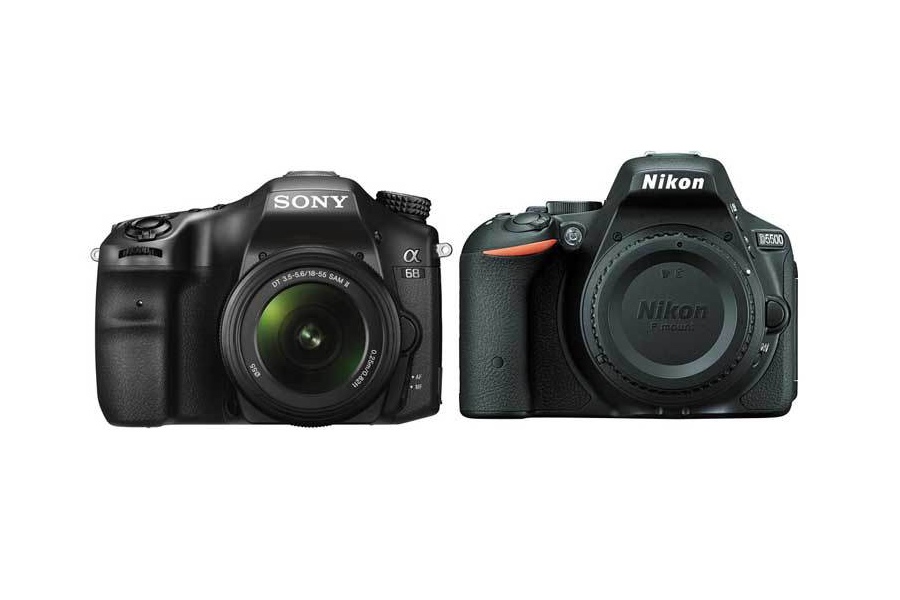
Below you can see the specs comparison table of Sony A68 vs Nikon D5500 digital cameras. Some differences like sensor, image size, shooting speed, lcd size etc.. detailed as bold on the table.
| Features | SonyA68 | Nikon D5500 |
|---|---|---|
| Megapixel | 24 Megapixels | 24 Megapixels |
| Sensor size/type | APS-C (23.5 x15.6 mm) | APS-C (23.5 x 15.6 m) |
| Low-Pass filter | Yes | Yes |
| Image Processor | Bionz X | Expedition 4 |
| AF Points | 79 including 15 Cross-type AF Points | 39 points |
| Image Stabilization | Built-in | No |
| AF System | Contrast Detect (sensor) and Phase detect (hybrid) | Phase detect |
| ISO Sensitivity | 100-25600 | 100-25600 |
| Shutter Min – Max | 30 sec 1/4000 sec | 30 sec 1/4000 sec |
| Top Continuous Shooting Speed | 8fps | 5fps |
| Video | 1920 x 1080 (60p, 30p) | 1920 x 1080: 60 fps, 50 fps, 30 fps, 25 fps, 24 fps 1280 x 720: 60 fps, 50 fps 640 x 424: 30 fps, 25 fps |
| Display | 2.7″ LCD Rear Touch Screen | 3.2″ Rear Touchscreen Swivel LCD (1,037,000) |
| Viewfinder | EVF 100% | Optical pentamirror (95%) |
| Hot-shoe | Yes | Yes |
| Battery Life | 480 shots | |
| Environmentally sealed | No | Yes |
| Dimensions | 143 x 104 x 81 mm | 143 x 104 x 81 mm |
| Weight | 690g | 647g |
The Sony a68 will be available in Europe starting in March 2016 with a price tag of €600 (
$650) for the body only, or €700 (
$760) when bundled with an 18-55mm f/3.5-5.6 kit lens. Pricing and availability in the US have yet to be announced.
What to choose? Canon vs. Nikon vs. Sony vs. Pentax

This is perhaps one of the most popular questions that newbies have. Which system should you choose? Nikon or Canon? Or maybe Sony or Pentax? The question is simple and complex at the same time. Let's think about the answer together.
The most popular answer to the question of choosing a system is: “Take what you like best.” Or in other words: “Take what is in your hand.” Very often you can hear advice that you should choose your first camera based on how you feel: come to the store and feel out future candidates. Which one of them seemed more convenient to you, liked the look better - that’s the one you should take. There is definitely some truth in this.
The whole question is that when choosing a camera, at the same time you choose the system as a whole. By choosing Canon, you will be dealing with lenses of this brand, with flashes of this brand, and with all the pros and cons inherent in this line of photographic equipment. And this is true for any brand. Let's briefly characterize the most popular brands, consider their pros and cons that lie on the surface.
Nikon and Canon
It just so happens that Nikon and Canon are today the leaders in the digital photographic equipment market. Two leaders in sales of photographic equipment and photographic accessories have in their arsenal all types of cameras: from compact to professional SLR. We will only talk about SLRs (both amateur and professional).
The choice of one of these brands most often consists of subjective impressions. To say that one of them is better than the other is absurd. It is impossible to compare brands in principle - you can only compare specific camera models. But even in this case, there may not be a single answer to the question “which is better.”
An important factor when choosing a particular company may be the availability of service centers of this company in your city. If you have a Canon service center, but no Nikon, then it would be wiser to choose the first option: it is no secret that problems often arise with photographic equipment, ranging from elementary ones, like contamination of the matrix, to serious ones, like the need to change the shutter.
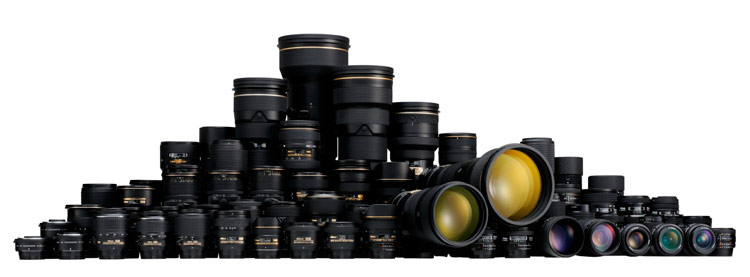
Nikon lens line
So, if you like two cameras, one of which is made by Nikon and the other by Canon, then study the issue of the distance from you to the service centers of the corresponding brands. If you consider this factor not important for yourself, or in the absence/presence of both service centers nearby, then there is only one option left - go to the store and hold cameras of both brands in your hands, take a few test shots and choose what you like best .
On my own behalf, I’ll add the following subjective opinion: Canon has recently started to suck. Amateur-level Canon cameras come out too often and are not much different from each other (Canon 600D, 650D, 700D). In terms of technical development, Canon is beginning to give way to Nikon.
Here is another list of amateur Nikon and Canon models that, in my opinion, are worth buying today: Nikon D5100, D5200, D5300, D7000, D7100, Canon 70D, 700D, 100D.
Sony and Pentax
Sony goes its own way: the company produces so-called cameras with a translucent mirror. They look like mirror ones, but the principle of their operation is somewhat different. Without going into details, I’ll tell you what this led to: the speed of burst shooting has increased. However, these cameras do not have an optical viewfinder; instead, an electronic one is used. In addition, due to the translucent mirror, less light reaches the surface of the matrix during shooting. Those. All other things being equal, a camera with a translucent mirror needs more light to take photographs. During the day there should not be any particular problems with this, but in the evening or indoors this issue can be acutely felt.
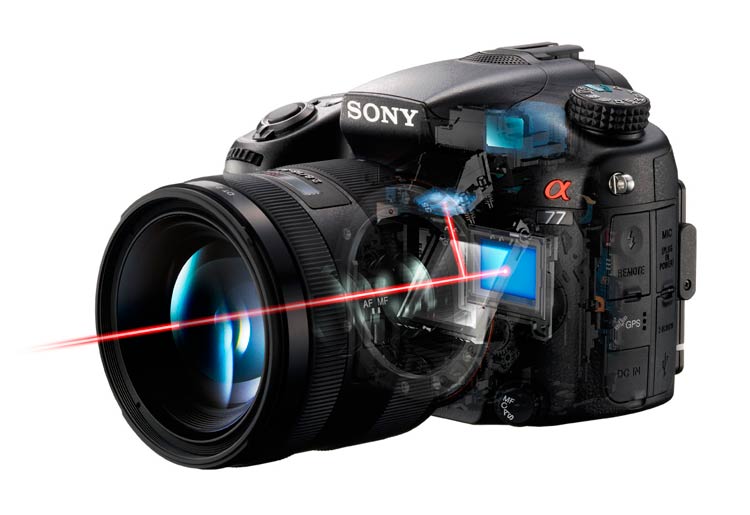
Sony Translucent Non-Lifting Mirror Technology
An undoubted advantage of Sony cameras is video shooting. This is especially true for modern models. Beginners should be interested in this: many people like to shoot videos. So if you consider yourself a video shooter, then Sony may be your choice.
Pentax is a different breed. Here everything is already according to the classical scheme: the company produces SLR cameras. They have their own highlight, which Pentax focuses on - dust and moisture protection. In general, it is worth noting that Pentax amateur SLR cameras are of quite high quality and are hardly inferior to Canon and Nikon cameras, and in some cases even surpass them.
Pentax has such a disadvantage as video shooting. But photographers who buy a camera for photography (such a tautology) can hardly be saddened by this. A much more serious drawback is the inability to switch from an amateur SLR camera to a professional one for the simple reason that Pentax does not have full-format SLR cameras in its line.
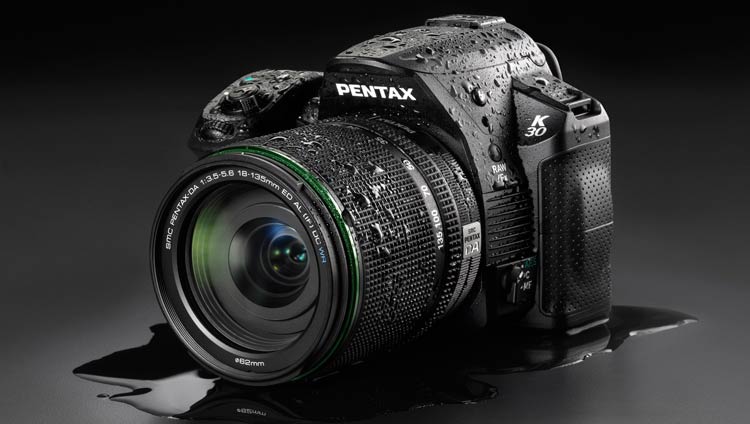
Pentax often places emphasis on water/dust/dirt resistance of its products. It should be borne in mind that not all Pentax equipment has these properties.
A common drawback of Sony and Pentax cameras is the small number of offers for sale on the market and the price of native optics. Lenses are expensive, not easy to find, and the selection is not as wide as competitors Canon and Nikon.
My general recommendations for Sony and Pentax are as follows. It's worth taking a Sony camera if your priority is video shooting or you're a fan of their mirrorless technology (electronic viewfinder in particular). As for Pentax, their cameras are well suited for bad weather conditions and provide excellent photo quality on par with their competitors, and in some respects they are even ahead of them. If you don't plan on ever upgrading to a full frame camera, then Pentax might be a good choice.
Although I am not a fan of Sony and Pentax, there are some models that I like from these companies: Pentax K-5 II, Pentax K-30, Sony Alpha SLT-A77.
As a result,
in general, it was not without reason that I divided the article into two parts: “Nikon and Canon” and “Sony and Pentax”. The first group of SLR cameras leads the market, and, in general, there is no particular reason to prefer anything else to them. This doesn't mean that Sony and Pentax are worse. It’s just that for me personally they have serious limitations that can prevent a novice photographer from further development. If you plan to limit yourself to one camera with one lens and do not shoot for amateur purposes very often, then you can choose any of the four companies presented in the article. Otherwise, choose Canon or Nikon. This is, so to speak, my humble opinion.
Update from 01/10/2017
I decided to update the information in this article a little, after all, a lot of time has passed since it was written. You can see how my attitude towards systems has changed in the new video.
Which one will give best image quality among Nikon D5500 vs Sony a6000 and Nikon D3300 vs Sony a6000?
Which one will give best image quality among
Nikon D5500 vs Sony a6000
Nikon D3300 vs Sony a6000
Nikon D5500 vs Nikon D3300
My purpose is traveling taking Potrate Photos and landscape Photos at day and night and i am looking for one time investment not again and again buy separate lenses
10 Answers

the sony a6000 has the worst kit lens of the three and i mean after a while it really bugs u
put a quality lens (sony are a rip off) on it and it will take better general photos in theory — all other things being equal then the nikons models you mentioned
in the real world its about which camera you enjoy holding . aka keeping it still and how you find your subject matter with it
the d5500 seems to be good for beginners with the touchscreen. still light body etc
the nikon d5500 is a great camera to have in your hand all day. the a6000 isn't
they all have crappy viewfinders unless to go to pentax or more serious models.
the only advantage to the a6000 is i can hold it in my jacket pocket and whip it out when needed the nikons are on show all the time.
to recap most decent online comments
1. its the photographer
3.its the photographer
4 its the camera that you like to hold as you will use it more then one you dont — so your learning curve will increase
5.its the photographer
6.. its the menu as you will be diving in alot as you have to make some changes to the settings
its the photographer its the lens its the photographer its the lens its the photographer its the lens


The biggest influence on image quality is the skill of the photographer. Give an inexperienced photographer a good camera, and they will take average snaps. Give an experienced photographer a crappy point and shoot, and the photos will still be excellent. A camera is only a tool. Owning a good camera does not guarantee good photos, just like owning a nice expensive paintbrush doesn't make you a good artist. Next comes the quality of the lenses. Kit lenses are not superior — they are basic lenses for general purpose photography. Optically, they aren't amazing, although they are all good enough for learning with, and for general photography. Higher quality lenses always cost more money. The better the optical quality of the lens, the more complex the manufacturing process, and therefore the higher the price. Some camera systems have in-camera image stabilization. Those that don't have lenses available with image stabilization built in. Nikon calls it “VR”. You pay more for image stabilized lenses. In my opinion in-camera stabilization is inferior to image stabilization built into lenses — especially when it comes to using long telephoto lenses, when you need it most. Way, way down at the bottom of the list of things that make a good photo, is the camera body. It is the least important thing in photography. There will be little difference between any of those cameras you listed. All are capable of excellent high quality images in the right hands. You also need to know that the Sony cameras you listed are not DSLRs. They have no optical viewfinder. And most importantly of all, for cameras at similar price ranges, which include all entry level DSLRs and some mirrorless systems with APS-c sensors, there are no camera manufacturers that produce bad quality cameras. Quite frankly, you can't go wrong whatever camera or brand you choose. Choose the one you want.
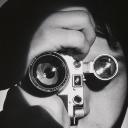
The image quality is mostly in the lens. Put a great lens on a crappy body and you'll get sharper images than a kit lens on a $6,000 Nikon.
The D5500 costs more than the D5300 and that 5300 is a higher number than 3300 making the D5300 a camera higher up in Nikon's lineup. So it should be obvious which one is better.
The A6000 is a totally different camera designed for different uses. Even if it had 10x better image quality than the D5500 (which it doesn't), shooting in a situation like sports, you'll get far more blurry shots with it than the Nikon. So what good is image quality with blurry shots?
Just buy the camera that best fits your needs.

